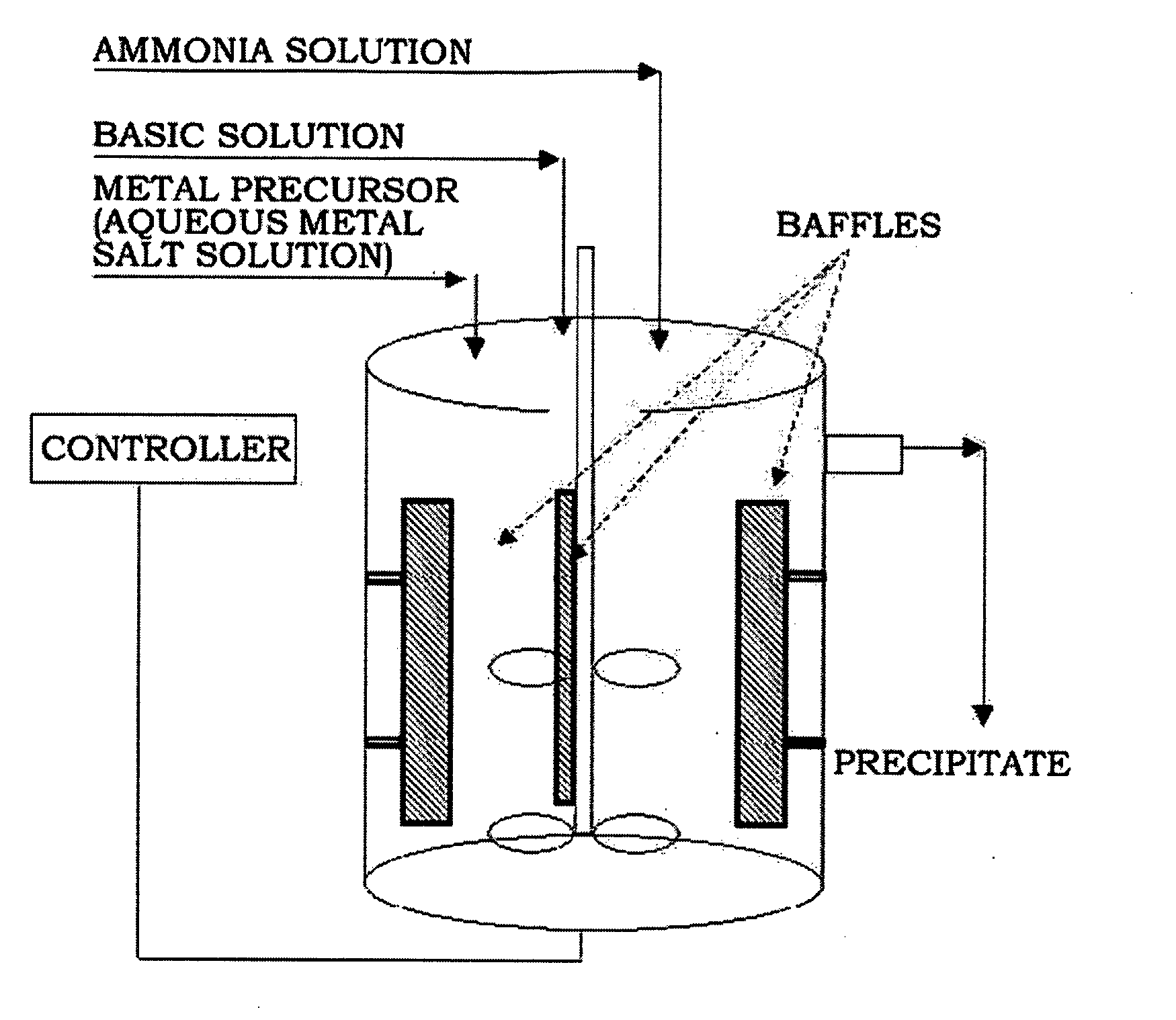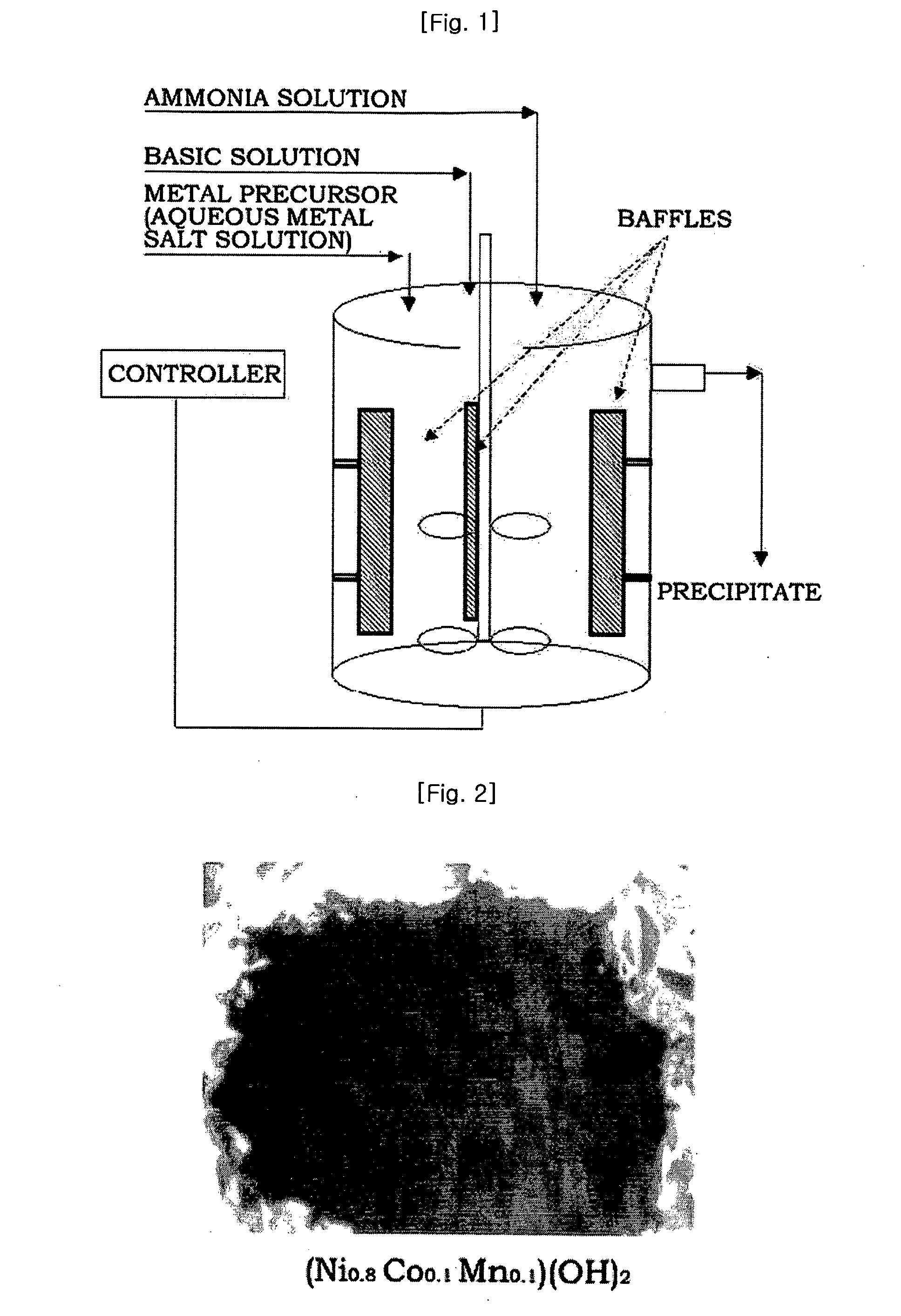Double-Layer Cathode Active Materials for Lithium Secondary Batteries, Method for Preparing The Active Materials, and Lithium Secondary Batteries Using the Active Materials
a lithium secondary battery and active material technology, applied in the direction of conductors, cell components, nickel compounds, etc., can solve the problems of poor safety, high price and poor safety of lithium ion secondary batteries, and not have a stable crystal structure, etc., to achieve superior thermal safety, high capacity, and high capacity.
- Summary
- Abstract
- Description
- Claims
- Application Information
AI Technical Summary
Benefits of technology
Problems solved by technology
Method used
Image
Examples
example 1
[0089]Four liters of distilled water was put in a reactor (capacity: 4 L, power of rotating motor: 80 W), and then nitrogen was supplied to the reactor while bubbling at a rate of 1 liter / minute to remove dissolved oxygen. Stirring was conducted at 1,000 rpm while keeping the temperature of the reactor at 50° C.
[0090]A 2.4M aqueous metal solution containing nickel sulfate, manganese sulfate and cobalt sulfate in a molar ratio of 1.92:0.24:0.24 and a 0.2M aqueous ammonia solution were continuously fed to the reactor at rates of 0.3 and 0.03 liters / hour, respectively. A 4.8M aqueous sodium hydroxide solution was fed to the reactor to adjust the pH to 11.
[0091]At this time, the rotation speed of the impeller was set to 1,000 rpm. The flow rate was controlled so that the average residence time in the reactor was about 6 hours. After the reaction reached a steady state, the reactants were further stayed for a prolonged time to obtain a denser composite metal hydroxide.
[0092]After the fee...
example 2
[0105]Calcining was carried out at 770° C. for 20 hours to fabricate a half battery.
example 3
[0106]The double-layer composite and ammonium fluoride (NH4F) and metal hydroxide (Ox) were mixed in a molar ratio 1:0.05, and calcined at 770° C. for 20 hours to fabricate a half battery.
PUM
| Property | Measurement | Unit |
|---|---|---|
| particle diameter | aaaaa | aaaaa |
| particle diameter | aaaaa | aaaaa |
| temperature | aaaaa | aaaaa |
Abstract
Description
Claims
Application Information
 Login to View More
Login to View More - R&D
- Intellectual Property
- Life Sciences
- Materials
- Tech Scout
- Unparalleled Data Quality
- Higher Quality Content
- 60% Fewer Hallucinations
Browse by: Latest US Patents, China's latest patents, Technical Efficacy Thesaurus, Application Domain, Technology Topic, Popular Technical Reports.
© 2025 PatSnap. All rights reserved.Legal|Privacy policy|Modern Slavery Act Transparency Statement|Sitemap|About US| Contact US: help@patsnap.com



